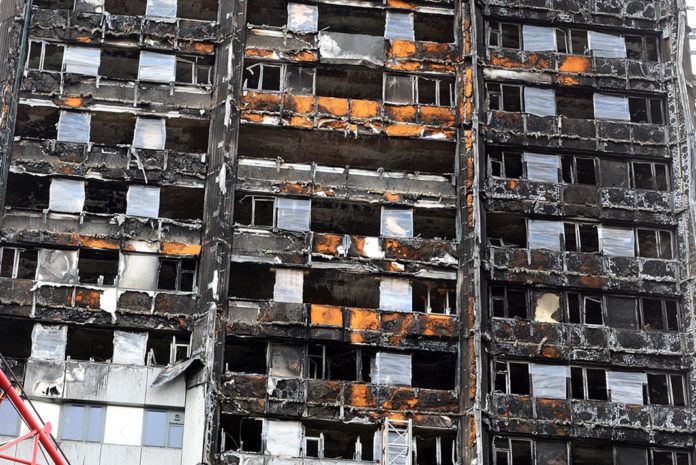The report investigated the effects of toxic fumes generated by certain cladding combinations in designs still permitted by building regulations – and the effect this has on the people occupying buildings when fire breaks out.
Dr Jim Glockling, the Fire Protection Association’s technical director, explained: “Measuring smoke toxicity in building products is currently not a legal requirement. The results of our study show that current regulations may not adequately protect occupants from the potentially toxic fire gases from materials burning on the outside of buildings. Some current common cladding material combinations were shown to present less of a threat than others. There is certainly a need for further study.”
A key feature of rainscreen cladding (the type used on Grenfell Tower) is a space formed between the insulation material and the back of the cladding panel which may also contain other materials such as vapour membranes (a sheet of material to keep out moisture). Strict rules govern how the internal walls of a building must contain fire to assist with safe evacuation, but the same is not true of the external walls where there are few requirements to prevent the spread of flame and heat from outside. In this location devices and features, such as bathroom or kitchen vents have the potential to transmit fire and smoke from the cladding system into the occupied space.
This report confirms a potential for serious harm to any human exposed to these toxic products in the case of a fire. The results looked at a typical living room in a building covered in a rainscreen-type cladding. The findings suggest that for some compliant material combinations, once the fire breaks into the cladding section containing a vent connected to their apartment, people are predicted to lose consciousness within 10 minutes and, unless rescued would die within 30 minutes.
The Fire Protection Association’s testing involved a selection of cladding and insulation combinations legitimately used on buildings in the UK, including similar materials to those on Grenfell Tower. Four tests were conducted and compared the potential contribution from smoke toxicity that might be made by different cladding and insulation configurations.
The Fire Protection Association is offering this work to government and the Grenfell Inquiry, and at the very least this work should prompt further research into whether the evaluation of fire toxicity should become an integral part of the building products approval process.
Jonathan O’Neill, the Fire Protection Association’s managing director says:
“This work reinforces our view that a range of factors, such as measurement of toxic fumes, need to be considered when choosing building materials, in order to protect buildings and ultimately save lives. The Fire Protection Association wants assurance from government that systems are in place to regularly review building standards to ensure that the UK can never experience a tragedy on the scale we witnessed at Grenfell – on our or any future generations’ watch.”
This testing was undertaken over the past four months at the Fire Protection Association’s laboratory in Blockley, Gloucestershire, which has a wide range of testing facilities and is available for commercial use.
The Fire Protection Association’s (FPA) report was funded by the UK insurance industry through RISCAuthority. It was assisted by key industry experts, including toxicant analysis by the University of Central Lancashire (UCLan) and material design detailing by Arup.
To read the full report please click here: www.thefpa.co.uk/about/news/news_detail.fpa-toxic-smoke-testing-results.html




